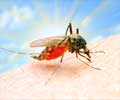A key protein switch that enables Chikungunya Virus (CHIKV) to spread to new vectors has been identified by researchers.
A key protein switch that enables Chikungunya Virus (CHIKV) to spread to new vectors has been identified by researchers at the University of Texas Medical Branch.
The causes of the virus’ increased ability to infect and be transmitted by the Asian tiger mosquito, Aedes albopictus, has been explained in a report in PLoS Pathogens.The background in formation in the report suggests that CHIKV is an emerging arbovirus associated with several recent large-scale epidemics of arthritic disease.
It further states that the virus has formerly been known to be carried primarily by the mosquito Aedes aegypti. But a recent epidemic in the Indian Ocean islands suggested that something else was carrying the virus because these mosquitoes are not found there.
Instead, the researchers say, the relative Asian tiger mosquito, Aedes albopictus, is present in the Indian Ocean islands.
Lead researcher Dr. Stephen Higgs says that his team was compelled to look further into CHIKV by the presence of Aedes albopictus in the region.
Another factor that prompted the researchers to carry out this research was a previous study’s finding that the epidemics on islands in the Indian Ocean were associated with a strain of CHIKV with a mutation in the envelope protein gene (E1-A226V).
Advertisement
The mosquitoes were infected with two genetically-engineered clones of the virus, one with the mutation and the other without.
Advertisement
The finding was also important for the purpose of understanding why the virus was found in an area that lacks the typical vector mosquito.
The Asian tiger mosquito is present in many countries. Both mosquito species are currently present in the US and the Asian tiger mosquito is spreading in Europe.
The findings suggest that, especially with the global climate warming, CHIKV may expand to new geographic locations.
Source-ANI
SRM









